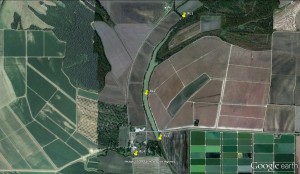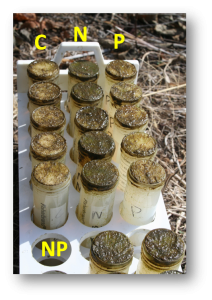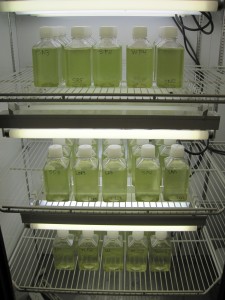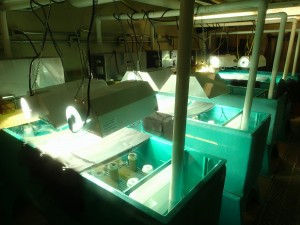In collaboration with the USDA National Sedimentation Laboratory
The US Department of Agriculture, Agricultural Research Service is actively engaged in research to enhance water resources within the watershed / stream corridor interface, including assessing the use of aquatic systems to improve water quality and reduce nutrient transport. Water quality and nutrient cycling in streams, lakes, and wetlands are strongly driven by microbial (algae and bacteria) processes.
We are studying how these aquatic agroecosystems can be managed to improve habitat quality and reduce pollutant transport downstream. The goal of this work is to look at how nutrients from fertilizers and eroded soil in runoff from fields impact the health of streams and lakes in this heavily agricultural region. This will help farmers and land managers minimize impacts on local waterways and downstream aquatic ecosystems, as they aim to maximize and continue to increase crop production to feed a growing population.
The research occurs in the Mississippi River’s Alluvial floodplain region in northwestern Mississippi, also known as the “Mississippi Delta,” and focuses on slowly flowing bayou systems that include shallow lakes, streams, and wetlands.
One aspect of this research looks at how the amount of water in the lakes and streams effects the system’s ability to process pollutants and provide adequate habitat for the organisms that live in there.
Jason Payne’s work involves studying how lake depth affects oxygen levels, as these lakes often go hypoxic (have very low oxygen levels) which leads to frequent fish kills. Oxygen in these lakes is mainly produced during the day through algal photosynthesis and continuously consumed by bacteria and algae as they grow. Nutrients like nitrogen and phosphorus can cause excessive growth of algae and bacteria, and suspended sediment can reduce light for photosynthesis. Thus there is a balancing act of oxygen creation and use that can be tipped in either direction by different combinations of pollutants. When more oxygen is used than produced, aquatic organisms can get stressed or die.
Murdock and Payne measure the oxygen balance in the water column and lake sediments under varying depth, light and temperature conditions and create lake maps that predict how oxygen levels will change in different parts of the lake under varying water depth scenarios.
Jordan Evans’ research focuses mainly on understanding how water depth changes a lake’s ability to remove nitrogen through the process of denitrification. This process, which changes dissolved nitrate to nitrogen gas, is done by microbes and is the only pathway that permanently removes nitrogen from the water by passing it to the atmosphere.
A key interaction of Payne’s and Evans’ research is that denitrification is greatest when oxygen is low. Evans’ work aims to understand how different combinations of water depth, nutrient and sediment inflow, and water temperature effect denitrification.
Ultimately we hope to determine water quality conditions that produce the best balance of ecosystem oxygen concentrations to maximize both nitrogen removal and habitat quality for organisms like fishes. We are trying to help focus the use of limited pollution mitigation resources to enhance Delta aquatic ecosystem health and increase the beneficial services these systems provide.”
Nutrient Retention and Cycling
Stream/Lake Metabolism and Hypoxia




